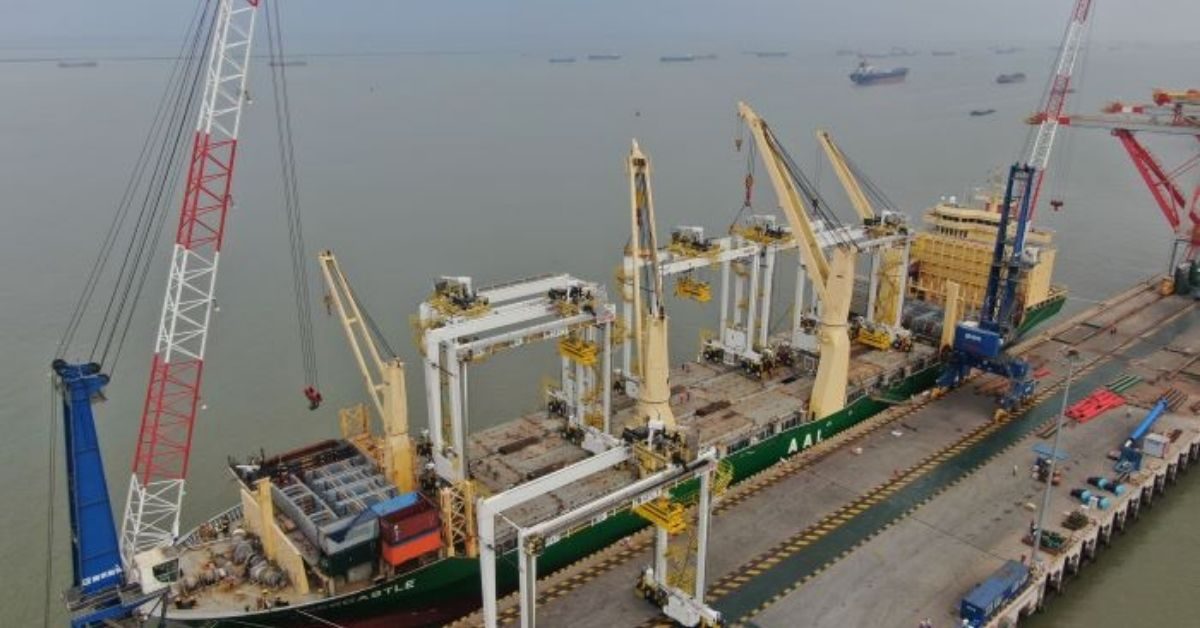As container rates and associated supply chain chaos escalate, two related trends are galvanizing the breakbulk sector: shippers and their forwarders are booking more and more laden containers on multipurpose vessel/heavy-lift (MPV/HL) ships, and they are pulling cargo out of boxes and switching to breakbulk modes, including for cargo rarely, if ever, shipped via breakbulk, shippers and carriers have told JOC.com.
Shippers willing to pay high rates to move boxes and newly unboxed cargo on breakbulk ships are driving up project cargo rates, Justin Archard, managing partner and cofounder of Hamburg-based One World Shipbrokers and founder of the Multipurpose Sentiment Index (MSI), told JOC.com Tuesday.
Forwarders unable to find reliable container capacity for their clients also continue to charter in MPV tonnage to move boxes, a transport choice that was vanishingly rare before late 2020 and early 2021. Now, forward bookings stretch well into the fall and “the spot market is essentially moribund” as free tonnage disappears, Archard said.
The MSI rose to 52.3 in the second quarter, up from 51.3 in first-quarter 2021, the survey’s inaugural outing. The MSI averages responses to a set of breakbulk shipping–related questions from an anonymous group of multipurpose vessel owners and operators. A reading of 50 is neutral; scores below 50 show pessimism or wariness; and scores above 50 indicate optimism.
No ‘help wanted’ signs up yet
MSI survey respondents see a very positive market at the moment, but they are reluctant to hire new staff or invest in new buildings, Archard said. There are still productivity gains to be had after a decade-long recession in the breakbulk sector, and almost no new MPV/HL ships are entering the market, which would increase staffing needs. “The new normal is eating away at the fat and making [carriers] leaner and more efficient,” he said.
While project and breakbulk forwarders and shippers have told JOC.com their work hours are escalating as rate discovery and cargo booking becomes increasingly challenging, “carriers are in the position of being bombarded with cargo opportunities,” Archard said. Offers require very short reaction times, and some shippers are not set up for this. “And, faced with increasing rates, we still see some hesitancy from charterers who believe that better options are always available,” he said. “This means that having lost a ship position, charterers are faced with going back to market and starting over.”
From the carrier perspective, “the good times are back — but strength and length remain opaque,” Archard said. How long the busy market lasts will depend on what happens with breakbulk’s rival segments: container and bulk carriers. MPV/HL carriers do not see a market correction on the horizon yet, but they are keenly aware that spillover effects from the tumultuous container market will not last forever. While wind cargo, a core breakbulk cargo, remains strong, recovery in oil and gas project cargo is lagging. Carriers with owned fleets and secure tonnage show slightly more market confidence than those with more variable fleets under short- and medium-term charter, he noted.
The market is expected to stay firm or strengthen for the next six months, according to the MSI report, as vessel shortages across all ship types, high container rates, and global port congestion continue to create bottlenecks. New COVID-19 outbreaks in Asia and the approaching Christmas season will only add further pressure on the container side.
Source: JOC.com







